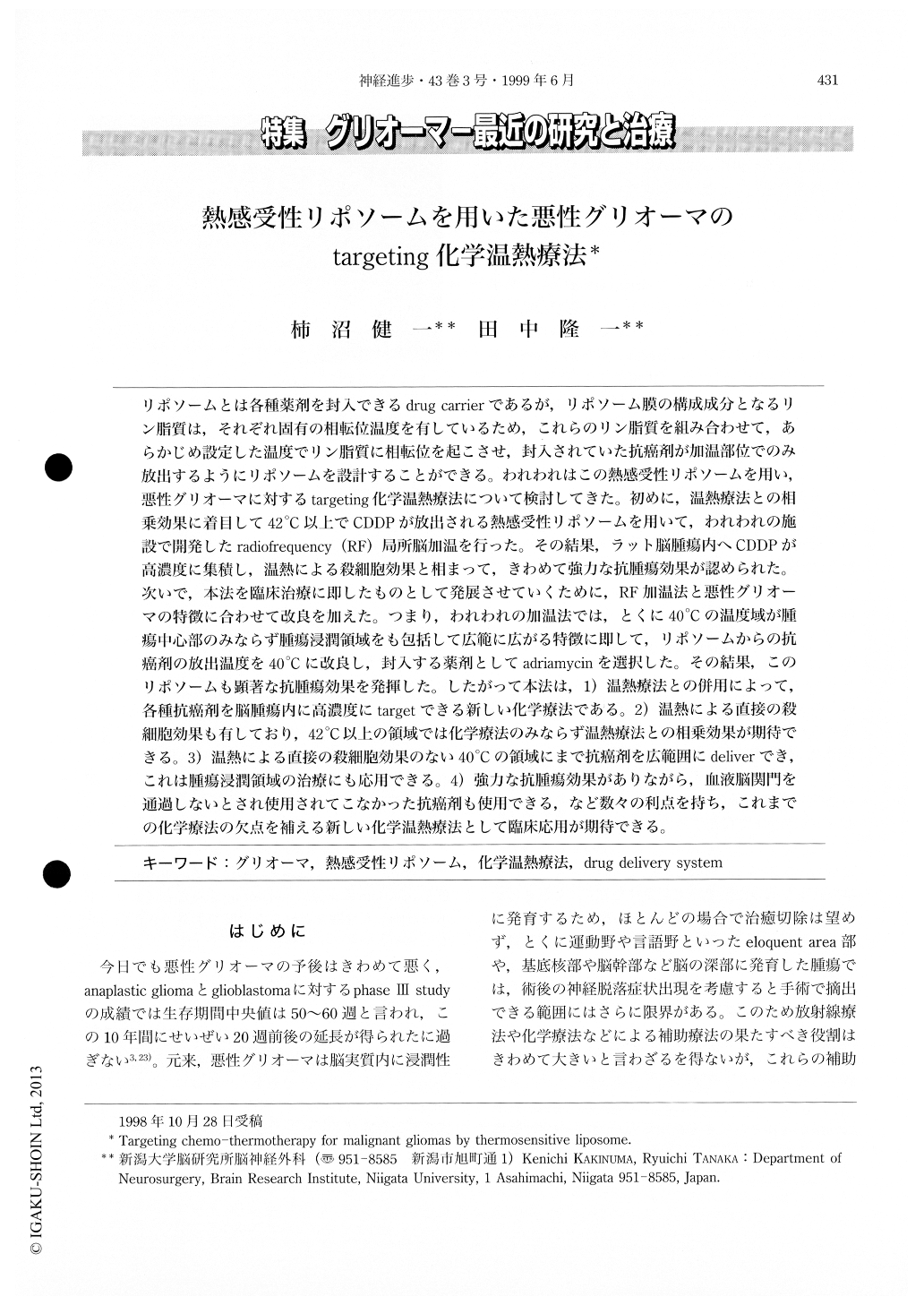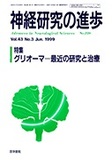Japanese
English
- 有料閲覧
- Abstract 文献概要
- 1ページ目 Look Inside
リポソームとは各種薬剤を封入できるdrug carrierであるが,リポソーム膜の構成成分となるリン脂質は,それぞれ固有の相転位温度を有しているため,これらのリン脂質を組み合わせて,あらかじめ設定した温度でリン脂質に相転位を起こさせ,封人されていた抗癌剤が加温部位でのみ放出するようにリポソームを設計することができる。われわれはこの熱感受性リポソームを用い,悪性グリオーマに対するtargeting化学温熱療法について検討してきた。初めに,温熱療法との相乗効果に着目して42℃以上でCDDPが放出される熱感受性リポソームを用いて,われわれの施設で開発したradiofrequency(RF)局所脳加温を行った。その結果,ラット脳腫瘍内へCDDPが高濃度に集積し,温熱による殺細胞効果と相まって,きわめて強力な抗腫瘍効果が認められた。次いで,本法を臨床治療に即したものとして発展させていくために,RF加温法と悪性グリオーマの特徴に合わせて改良を加えた。つまり,われわれの加温法では,とくに40℃の温度域が腫瘍中心部のみならず腫瘍浸潤領域をも包括して広範に広がる特徴に即して,リポソームからの抗癌剤の放出温度を40℃に改良し,封人する薬剤としてadriamycinを選択した。その結果,このリポソームも顕著な抗腫瘍効果を発揮した。
Thermosensitive liposome is a new drug carrier. They are microscopic vesicles composed of phospholipid bilayers that can contain antitumor drugs. Each phospholipid has each transition temperature. With the combination of an appropriate pair of phospholipid, a single transition temperature can be obtained. Consequently, thermosensi-tive liposomes remain relatively stable in the bloodstream at physiological temperatures and they release the highly concentrated antitumor drugs effectively when reaching their transition temperature.We described herein the effectiveness of targeting chemo-thermotherapy for malignant gliomas using thermosensitive liposome and interstitial radiofrequency hyperthermia. First of all, the authors demonstrated that the combination of thermosensi-tive liposome containing CDDP and hyperthermia focused CDDP to the experimental brain tumor, providing a greater antitumor effect. Our hyperthermic treatment, above 42°C, can treat the entire tumor core of human malignant glioma for direct thermal killing. When heating, the 40°C area extended up to a wide portion, covering the area invaded by tumor cells. Therefore, a more effective thermosensitive liposome was developed for clinical use. It was designed to release Adriamycin (ADR) at 40°C and above. As a result, this new thermosensitive liposome sharply released ADR at a temperature of 40°C as planned, bringing a significantly greater antitumor effect in rat tumor models.

Copyright © 1999, Igaku-Shoin Ltd. All rights reserved.


